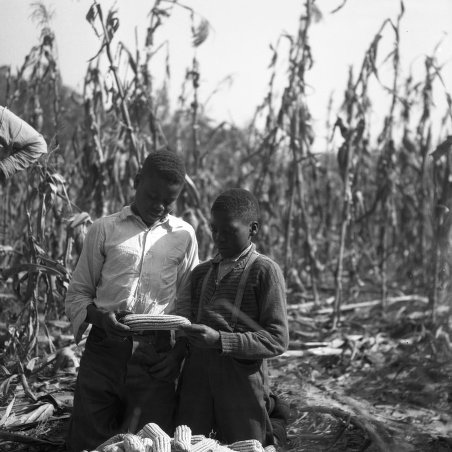
The Christmas song,
Baby it’s Cold Outside, made famous by
Lee Ann Womack with Harry Connick, Jr., pretty well describes the winter
to date. To make matters worse, 65
0
one day, followed by 36
0 the next, is hard on humans and horses
alike. I have put on a jacket more
times this winter than in the past 3 winters combined and more than once pulled
out a heavy jacket for a 26
0 morning. So, what about the comfort of your horse?
As is the case with humans,
some horses handle cold temperatures better than others. A normal Fall, when temperatures decline
steadily over a 2 month period allows healthy horses to grow a full winter
coat. The normal equine winter coat will
protect most horses from cold temperatures and wind but, throw in rain on top
of wind and chilling temperatures and even the best of coats may not provide
adequate relief. This is the Rule of 2
Out of Three. Simply put, a healthy
horse can generally withstand a combination of two of the three extreme
environmental conditions (wind, rain, cold temperatures) but may need
assistance keeping warm when all three conditions exist in combination. Then, there are always those horses that do
not grow sufficient coats to handle even two of the three factors comfortably.
Options for helping horses
handle the winter weather include, stabling the horse during extreme weather,
blanketing the horse as needed or providing windbreaks that provide needed
protection. Just a quick word about
stabling horses during the winter. Most
barns are built more for human comfort than for that of the horse. Avoid heating barns if horses are going to be
spending at least part of their time outdoors each day. Research indicates that horse health is
enhanced if the inside temperature of the barn is no more than 100
warmer than the outside temperature. So,
if the inside of your barn is more than 100 warmer than the outside,
you may need to blanket your horses when turning them out.
So, when should you blanket
your horse? Answer: when all three of
the above mentioned weather conditions exist or when the temperature drops low
enough to make your horse uncomfortable.
Observe your horse multiple times each day to be sure it is not
shivering. A horse that is really cold may
shiver like you and I do. If your horse
has a poor winter hair coat, you should anticipate this problem. If the weather report calls for cold
temperatures, wind and precipitation and horses do not have shelter, make plans
to blanket those horses that need it.
Remember, just because your horse didn’t show signs of being cold during
one weather event, does not mean it won’t the next time.
Blankets come in all
different sizes and colors and, like cars, come with many options. Do you want a closed front or buckled/Velcro
front? How much insulation do you
want? What denier should the outer shell
be? Denier refers to the fineness of the
yarn/thread that was used to make the product and thus, the ability of the
material to keep wind and water out. A
higher denier indicates a higher level of protection and durability. How much insulation do you want, 200 grams,
400 grams? Do you want a cut-back neck
line or regular? The cut-back neck line
works well for some horses and may actually help the blanket fit better.
To provide the greatest
comfort and to avoid slippage, a blanket should fit the horse properly. Measure the horse from the center of the
chest to the point-of-the-buttock (as viewed from the side) to determine proper
blanket size. Blankets may be sold
according to the length in inches or as Small (60”-66”), Medium (69”-72”) or
Large (>74”). If you will turn horses
out in a blanket during cold weather, it should be a heavy duty blanket with
double stitching and reinforced stress points.
For extreme cases, you may
also include a hood. Hoods give extra
protection and are made having most of the same properties as blankets. Hoods should have large eye holes, so the horse
can see effectively and usually attach to the blanket by means of one or more
elastic straps so the horse may extend its head to the ground for feeding
purposes. Also, for horses turned out in
a blanket, be sure the blanket and hood are waterproof. During extended rain your horse will likely
get at least partially wet anyway, but water proof materials will extend the
protection and extend the life of the blanket. Higher quality blankets may
include materials that actually wick-heat and moisture away from the horses
skin if the horse gets too hot. This is
particularly helpful for young horses that may run and play while blanketed and
when temperatures vary throughout the day.

A couple of points to
remember: 1. We blanket the horse to
protect it from the elements. Some
horses will actually sweat from being blanketed, especially if a hood is used
in combination. If your horse sweats
while wearing a blanket, cool the horse and re-evaluate the need for a blanket
at that temperature. 2. When purchasing blankets for turnout, it is
recommended that materials of greater than 1200 denier be used because of their
strength and durability. 3. In cold weather, feeding additional hay to
horses will actually help generate more body heat than feeding an equal amount
of additional grain; a practical way to keep your horse comfortable during cold
weather.
Dr. Mike Yoder
NCSU - College of Ag and Life Sciences
Extension Horse Husbandry













